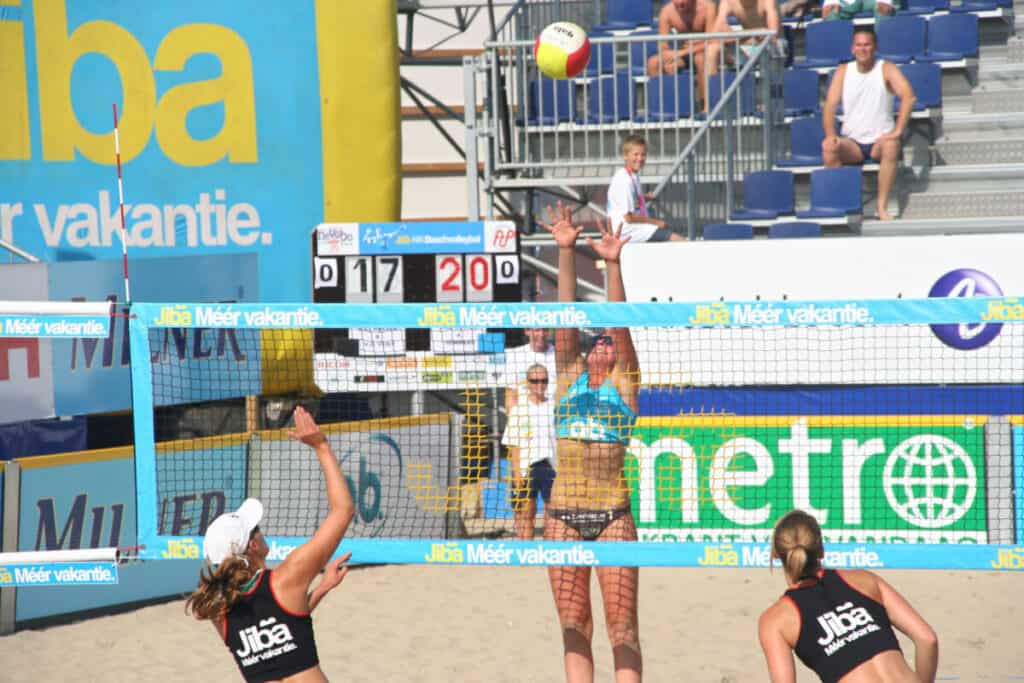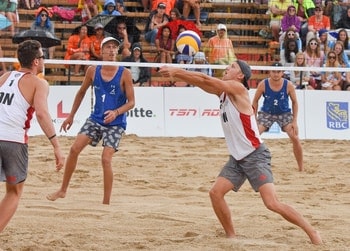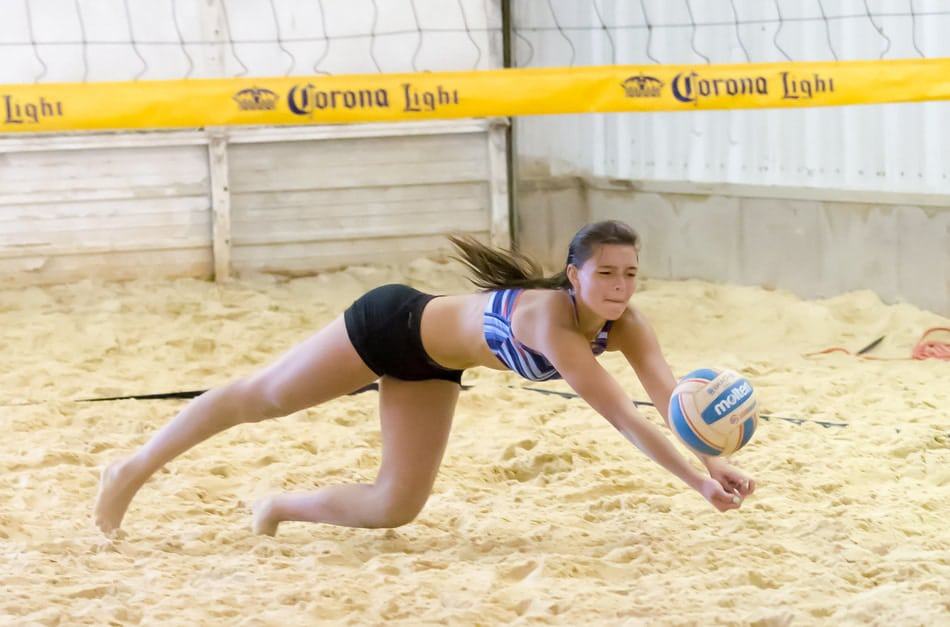Beach volleyball, a sport that blends the thrill of volleyball with the unique challenge of playing on sand, is a game known for its distinct set of skills and strategies. While many may be more accustomed to the indoor version of volleyball, the beach variation demands a different level of adaptability, particularly when it comes to mastering the ever-changing sand beneath your feet.
In this article, we’ll explore the skills that make a beach volleyball player excel and the art of adjusting to the dynamic surface of the beach.
Embracing the Unique Challenge of Sand
Playing beach volleyball diverges significantly from its indoor counterpart, mainly due to the surface it’s played on. Unlike the hard, smooth, and consistent floors of indoor courts, the beach volleyball arena is the sandy shore, which can vary in texture and firmness. The sand becomes a player’s confidant or nemesis, depending on how well they adapt to its idiosyncrasies.
The beach’s surface offers both advantages and disadvantages. On the bright side, it’s forgiving, reducing the risk of injury during falls or dives, and it’s gentler on players’ joints, making it a go-to option for those seeking a lower-impact sport. However, this soft and shifting substrate presents its unique set of challenges.

Footwork and Movement: The Dance on Sand
For a beach volleyball player, the initial skill to master is efficient footwork and movement on sand. Unlike the predictable and unyielding surface of indoor courts, sand beneath your feet is in constant motion. It has a habit of throwing off your balance and making rapid lateral movements a tad more demanding.
The resistance and drag created by the sand require players to develop a robust core and leg muscles to traverse it with ease. Additionally, players need to learn the art of making lightning-quick adjustments and pivots on the sand to reach balls that aren’t within their immediate path.
Many players adopt specific drills to enhance their footwork on sand. These drills focus on movements like shuffling, backpedaling, and sprinting on sand, allowing athletes to adapt to the distinct demands of the beach volleyball court.
Serving and Passing: Navigating Service on Sand
Two fundamental skills in volleyball are serving and passing, both of which require a unique approach when playing on sand. The serve marks the opening move in a rally and sets the tone for the game, while passing is crucial in receiving the opponent’s serve.
Serving on the beach necessitates a different technique than what you’d employ indoors. The shifting sand can rob the server of their power, making it more challenging to execute powerful serves. To adapt, players often opt for the jump serve, where the extra height and power generated by the jump compensate for the sand’s resistance. Moreover, players must perfect spin serves, adding unpredictability and difficulty to their serves.
Passing or receiving an opponent’s serve poses another challenge in beach volleyball. The unpredictability of playing outside makes it tricky to anticipate the ball’s behavior. Players must react swiftly and use their bodies to control the ball, often relying on their forearms to ensure precise passes. Passing on the beach necessitates finesse and control since the ball may not bounce predictably when fluctuating temperature, wind, moisture, and sand on the ball may all be a factor.
Setting and Attacking: Shaping the Offensive Game
Setting and attacking, essential elements of the offensive game in volleyball, necessitate adjustments on the softer and less predictable surface of the beach.
Setting on the sand demands a gentle touch and pinpoint accuracy. The sand has a knack for absorbing some of the energy from the setter’s hands, affecting the height and speed of the set. Beach volleyball players adapt by developing soft, controlled hands that can finesse the ball into the perfect position for their partner to attack.

Attacking or spiking, a fundamental skill, requires power and precision. On the beach, players need to modify their approach to account for the sand’s resistance. A deep and explosive jump is vital to generate sufficient power to breach the opponent’s defense. Players must also master the art of wrist snap to add spin and control to their shots. Targeting angles and exploiting the sand’s unique properties are key strategies in beach volleyball attacking.
Defense and Blocking: The Art of Sandy Defense
In beach volleyball, defensive and blocking skills are pivotal for success. The soft sandy surface allows for sprawling plays and dives, but it also calls for players to adapt their techniques for effective defense.
To excel in defense, players must become expert readers, anticipating the opponent’s shots and reacting swiftly. Diving in the sand requires a distinct approach compared to the hard court, and players need to master the skill of sliding and rolling to execute effective defensive maneuvers.
Blocking at the net is another crucial aspect of beach volleyball. Unlike indoor players who rely on the stable surface for support, beach volleyball players adapt to blocking on the shifting sand. Effective blocking mandates quick reflexes, a powerful jump, and impeccable hand placement. Players need to time their jumps to perfection to penetrate the net and thwart their opponent’s attacks.
Communication and Strategy: Navigating Wind and Sun
Effective communication is fundamental in beach volleyball. Teams must adapt their communication to account for the outdoor environment, where factors like wind, sun, and the ever-shifting sands can impact the game.
Ever wonder what the beach signals mean? Check out: How to Read Beach Volleyball Finger Singals
Teams develop clear signals and cues to communicate during a rally. Furthermore, players need to adapt their strategies in response to the elements. Wind can alter the ball’s trajectory, while the sun can pose visibility challenges, especially when serving or receiving. Thus, players need to adjust their positions, serving tactics, and shot selection to accommodate these external factors.

Mental Toughness: The Power of Resilience
Adapting to different surfaces in beach volleyball is a test of mental fortitude. The sand can be physically and mentally demanding, requiring constant adjustments and unwavering concentration. Players need to stay focused and resilient, even when the conditions are challenging.
Mental strength is particularly critical in beach volleyball, a sport where it’s just you and your partner, with no place to hide. Players must adapt and persevere through the rollercoaster of a match, a testament to their mental resilience. This strength allows players to stay composed and make sound decisions when the pressure is on.
If you’re still unsure about the sand, check it this article next: Should I Switch From Indoor to Beach Volleyball?
Sand Volleyball is the Most Dynamic
Beach volleyball is a dynamic and exhilarating sport that demands adaptability from its players. The unique sand surface offers both advantages and challenges, and mastering the requisite skills is key to success. Whether it’s mastering footwork and movement, perfecting serving and passing, honing setting and attacking, or excelling in defense and blocking, adaptability is the name of the game.
As with any sport, it’s through dedication, training, and experience that athletes can truly grasp the art of playing on the sandy shores. So, if you’re considering taking up beach volleyball, remember that adapting to different surfaces is all part of the sport’s unique charm. The challenges it presents are what make it a true test of skill, determination, and the ability to embrace the ever-shifting sands of the beach volleyball court.
Recent Posts
Athletes, listen up! Do you have a closet full of old jerseys, sweatpants, and tees that you just can't seem to part with? Well, dust them off, because you're sitting on a goldmine of fashion...
You may have heard, or you may have noticed, that there's been a change to the rule about double contact in volleyball. In 2022, an experimental rule change began to be implemented, where the double...
